What is Batik?
Batik is a kind of art and a craft which decorates on a fabric. This is a type of resist printing process by applying wax to the fabric in a specific area to make art. Once the wax gets harden, the fabric immerses in a dye. The main function of the wax is to prevent dye reaches to the fibers in Batik fabric. Then the fabric boils, to remove the wax.
The word batik has Javanese origin. People think it may come from the Javanese word amba (to write) and titik (dot). And also some may state that this word has derived from the hypothetical Proto-Austronesian root beCik (to tattoo). This word has recorded first in English from the Encyclopedia Britannica of 1880, and it has spelled as batik.
◘ List of Suitable fabrics for Batik
History of Batiks
When it comes to the history of batiks, evidence found in the Far East, Middle East, India, and Central Asia over 2000 years ago. Then this art has spread, from Asia to the Malay Archipelago islands and west to the Middle East through the caravan route. Batiks has found from China in AD581-618 as well as a silk batik from Japan. Indonesian Batik more popular in the world. So Java Island has greater development in Batiks even in ancient times, and there is evidence that Dutch brought Indonesian craftsmen to teach Dutch warders in 1835. In 1940, Swiss has produced an imitation of batiks and in the early 1900s German has developed mass production.
What is Batik Process? (Howto batik)
There are various types of dyes different kinds of fabrics like cotton, silk, wool, and natural fabrics which use for batik arts. Batik process is more interesting to learn and people use numerous techniques to save batik art. This is the common batik process.
- Initially, fabric or the cloth should wash perfectly to remove starch and beat with a wooden hammer.
- Then, certain areas of the cloth mark with a pencil in different designs.
- Those marked area cover by hot wax, which has made of paraffin or bee wax. People use various tools to apply wax.
- There is a pen-like tool, which name as canting, to pour the wax, if there are large areas to pour wax, people use a cap. This is a stiff brush or a tool.
- Then cloth dyed.
- Areas that have poured with wax, retains the original color while other areas contain the dye.
- The process of tube dying and the waxing are repeating to create a more sharp and creative design on the fabric.
- Artists use various techniques like etching, discharge dyeing, and stencils use to create vivid designs in many colors.
- When it comes to final dyeing, wax should remove with boiling water. Usually, the whole process takes almost a year for the cloth to ready for use.
Batik Types
Since batik art has spread over the countries, there is various type of batiks in the world.
- Batik stamps (Batik Block print)
- Batik Lukis (Hand drawn Batik)
- Batik Skrin (Screen Printing)
- Tie-Dye Batik
- etc…
- Batik Blok (Block Printing Batik, Tjap tool batik)
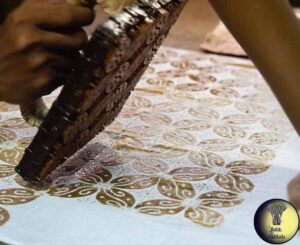
This is one of the earliest types of batik. In this type, people use block carved with patterns, and then dip in wax and stamped onto the fabric. Earlier, the blocks had made with potatoes. Since the potato spoils after few days quickly, people tried with wood. But, there also a problem, because wood also got broken after several times of use. Finally, blocks made with zinc or copper and it became a success until the present. That not an easy task, since making a suitable block takes about one month.
- Batik Lukis (Hand drawn Batiks)
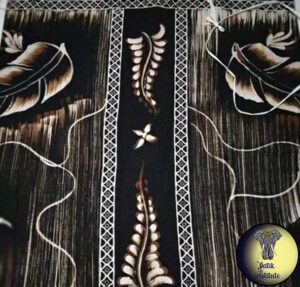
This type also calls as Batik Canting. In hand-drawn batiks, people use a pen-like tool of brass called canting and hot wax. The artist has a steady hand to draw the exact pattern without any mistake. Even one mistake can ruin the whole design since it is difficult to remove. After the pattern has drawn and the wax got dried, the artist then starts to color the design.
- Batik Skrin (Screen Printing)
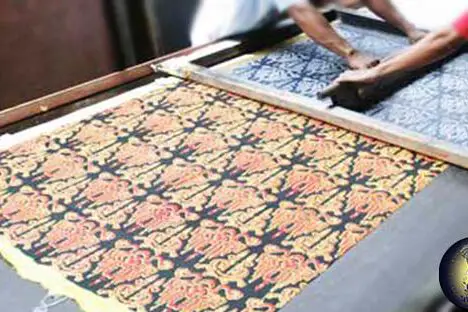
Stencils use in this method. These stencils have introduced in 1939 by Mohammad Yusof Bin Hj, Che Su, and Mohammad Daud Bin Hj, Che Su in Kelantan. This type of process is faster and easier than other types. But the artist should have a keen eye to match the patterns well.
- Tie-Dye Batik

This involves the method of dyeing the fabric after knotting or rubber banding it to produce irregular and interesting patterns.
Apart from these types, there are various types of dyes which use for the batik process. They are vat dyes, which consider as water-insoluble dyes such as indigo or reactive dyes which use in a chemical reaction. Vat dyes use stronger chemical and color get more fastness when regular wash when compared to reactive dyes.
Some common colors mainly use for batik arts. They are yellow, blue, green, purple, brown, and indigo.
Famous Countries for Batiks
- Indonesian Batik
Java island in Indonesia has flourished more in batik arts in the world. UNESCO has recognized in 2009 that Indonesian batik artists or producers carry the old tradition of it while exploring new ways to match the current trends, at the same time. In earlier times, batik has created only for personal use and ceremonial purpose. These batiks has good demand all around the world. process of this is involving with hot wax which applies with a tjanting, a pen-like tool to the cloth which resists the dye.
Most of the hand-drawn batik makes by women. They sit together in a circle and there is a steel pan which use to heat the wax to keep it as a liquid. Usually, this wax has made from beeswax, pine wax, and paraffin. And the recipe for this may change according to the workshop. The United States is the main and most important customer of Indonesian Batik.
- African Batik
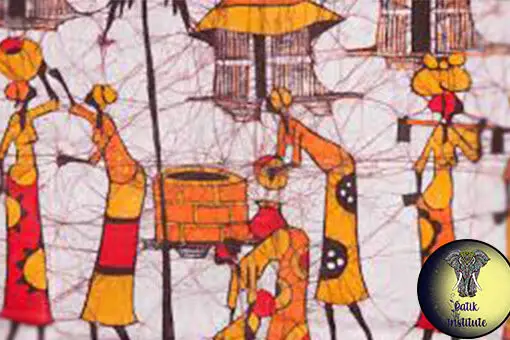
Africa is famous for hand-dyed batiks and mostly these come from Ghana and the Gambia. All fabrics which use for batiks are 100% cotton. Some of them are a subtly woven damask and others are plain weave cotton.
Apart from these countries, India, Malaysia, China, Singapore, and Sri Lanka also produce batik as per their traditions. All these countries have export opportunities for their batik fabrics.
National Batik Day [Hari Batik Nasional]
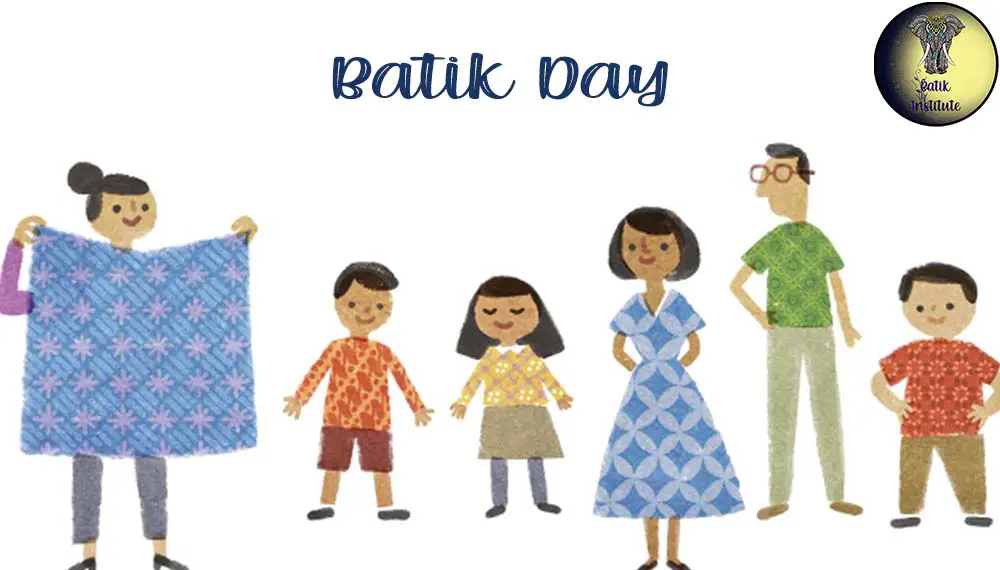
Indonesians celebrate the national batik day on the 2nd of October every year. It is a holiday in Indonesia and the government reminds people to wear batik on this day. This has created by the President in Indonesia in 2009 since UNESCO officially admitted Indonesian batik to the world heritage culture list. Most of the provinces celebrate this in various ways. The most famous one is the Festival Batik Solo or Solo’s Batik Festival. At this festival, there is a Batik parade on the main streets of the city. Approximately 250 people participate in this as models, parading for 4.2km by wearing numerous types of batik cloths.
Conclusion
Batik has come a long way with their unique prints and arts. They have become iconic chic clothing and fashion trend all over the world. Everyone loves Batik due to its simple design and delicate art forms. This also uses for cushions, curtains, and sofa covers to decorate homes and offices. It has good demand all over the world, due to its uniqueness and the way it produces.




